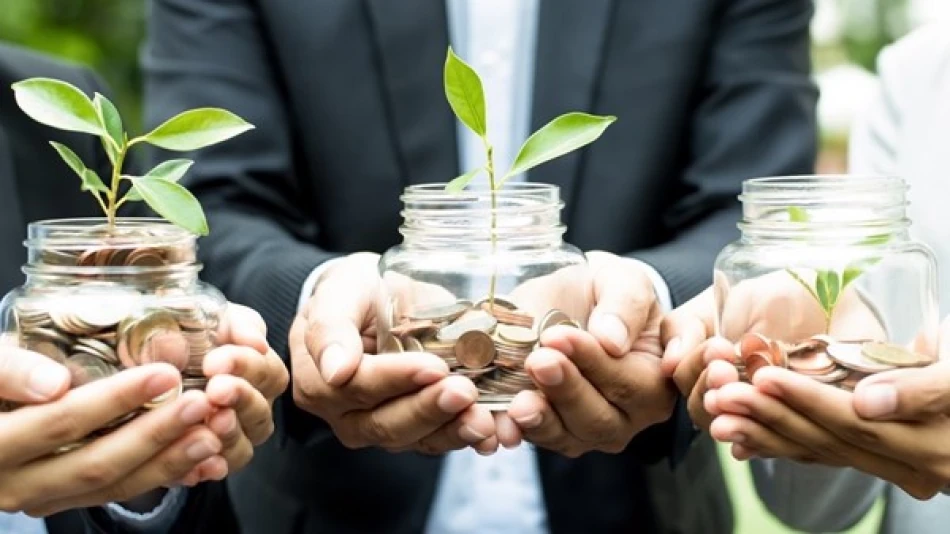
UAE Leads Global Sustainable Investment Surge, Standard Chartered Report Reveals
UAE Wealthy Investors Lead Global Transition Finance Revolution with 27% Portfolio Allocation
The UAE has emerged as the global frontrunner in sustainable investing, with wealthy investors allocating 27% of their portfolios to sustainable investments—the highest rate among eight major markets surveyed by Standard Chartered. This significant commitment positions the Emirates at the forefront of the transition finance movement, reflecting both the nation's ambitious Net Zero 2050 vision and a fundamental shift in how Middle Eastern wealth views climate-related investment opportunities.
UAE Outpaces Global Peers in Climate Investment Appetite
Standard Chartered's 2025 Sustainable Finance Report, titled "Transition Investment: New Frontiers of Wealth," reveals that 87% of UAE investors express interest in climate transition investments, aligning with the global average but distinguished by their substantially higher actual allocation rates. The survey encompassed wealthy investors across the UAE, Hong Kong, China, India, South Korea, Taiwan, Malaysia, and Singapore.
This 27% allocation rate significantly exceeds typical sustainable investment percentages seen in established markets like Europe and North America, where sustainable allocations typically range between 15-20% of high-net-worth portfolios. The UAE's leadership suggests that oil-rich economies may be driving transition finance more aggressively than previously carbon-neutral regions.
Strategic Focus Areas Signal Serious Commitment to Energy Diversification
Green Hydrogen Takes Center Stage
UAE investors are concentrating on three transformative sectors: green hydrogen production, carbon markets, and carbon capture and storage technologies. This focus aligns directly with the country's National Energy Strategy 2050, which aims to increase clean energy's contribution to 50% of the total energy mix.
Green hydrogen, in particular, represents a strategic opportunity for the UAE to leverage its solar energy potential and existing energy infrastructure expertise. The country's massive solar projects, including the Mohammed bin Rashid Al Maktoum Solar Park, provide the renewable energy foundation necessary for large-scale hydrogen production.
Carbon Markets Present New Revenue Streams
The emphasis on carbon markets reflects sophisticated understanding of emerging climate finance mechanisms. As global carbon pricing mechanisms mature, UAE investors are positioning themselves to benefit from both voluntary and compliance carbon markets, potentially generating revenue streams from the country's expanding renewable energy projects.
Market Implications and Investment Outlook
For global asset managers and financial institutions, the UAE's aggressive sustainable investment approach signals a major shift in Middle Eastern capital flows. Rula Abu Manneh, CEO for UAE, Middle East and Pakistan at Standard Chartered, emphasized that this momentum reflects the country's commitment to its Net Zero 2050 vision and represents a transition toward forward-looking, low-carbon investment strategies.
This trend likely pressures regional competitors like Saudi Arabia and Qatar to accelerate their own sustainable finance initiatives. The UAE's early mover advantage in transition finance could attract significant international green capital, potentially establishing Dubai and Abu Dhabi as regional sustainable finance hubs.
Broader Economic Transformation Strategy
The high allocation rates suggest UAE investors view climate transition not as a compliance exercise but as a core economic diversification strategy. Unlike Western markets where sustainable investing often represents values-based allocation, the UAE approach appears more pragmatically focused on capturing the economic opportunities of the global energy transition.
This positioning could prove prescient as global climate policies accelerate. The UAE's COP28 hosting and subsequent sustainable investment surge demonstrates how climate leadership can translate into economic opportunity, potentially serving as a model for other resource-rich economies navigating the transition to low-carbon growth.
Most Viewed News

 Layla Al Mansoori
Layla Al Mansoori






